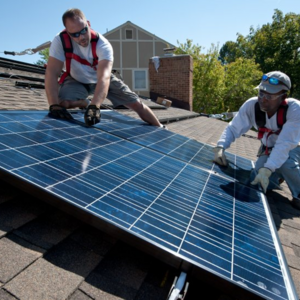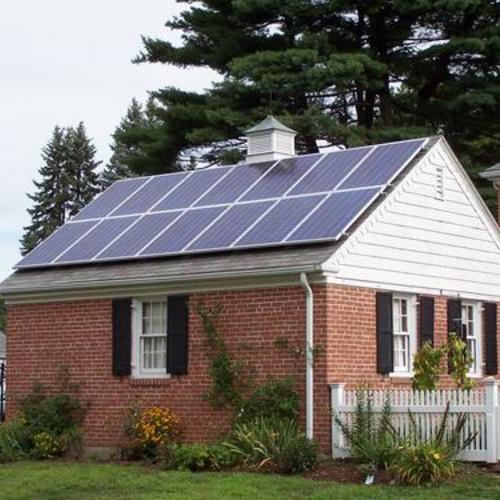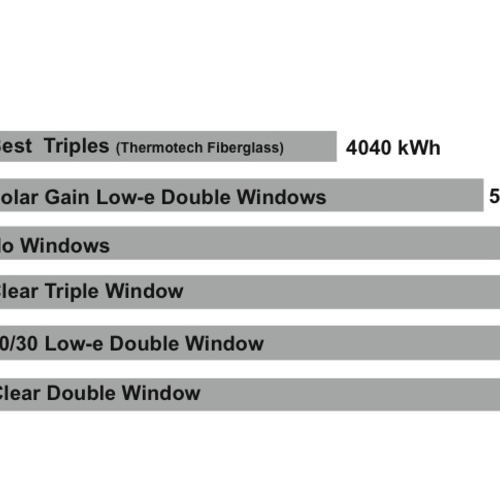
On August 16, the Inflation Reduction Act (IRA) became law. The IRA is multifaceted; its 730 pages touch on, among other things, prescription drug pricing and tax reform. But most of the act deals in one way or another with energy and climate. The IRA aims to increase manufacturing and deployment of low-carbon technologies in transportation, buildings, and power generation and puts the U.S. on track for a 40% reduction in CO2 emissions by 2030. It also addresses environmental justice and energy affordability with programs targeted at low-to-moderate income (LMI) households and frontline communities impacted by pollution and climate change.
The IRA will likely shape the green building movement for decades. In upcoming articles, I’ll explore different aspects of this landmark legislation. Details of some programs are still unfolding as Federal and State agencies work to implement the act’s provisions. For now, I’ll focus on sections of the bill that are already fairly clear: the extension and expansion of tax credits for energy efficiency upgrades, clean energy projects, and new energy-efficient homes. Homeowners and contractors with qualifying projects completed (or on track for completion) in 2022 may be able to use these credits to cut their tax bills. Longer term, the increased scope and dollar value of these credits—and the stability provided by their decade-long extension—should boost efficiency, renewables, and home electrification. In the short term, the steep increase in some tax credits after the new year and the possibility of additional rebates mandated elsewhere in the IRA may cause confusion as homeowners try to time their projects to maximize their savings.
The Energy Efficient Home Improvement credit
Federal tax credits for efficiency measures in existing homes (renamed the “Energy Efficient Home Improvement Credit” in the new legislation and also referred to as the “25C tax credit” after the…
Weekly Newsletter
Get building science and energy efficiency advice, plus special offers, in your inbox.

This article is only available to GBA Prime Members
Sign up for a free trial and get instant access to this article as well as GBA’s complete library of premium articles and construction details.
Start Free TrialAlready a member? Log in















15 Comments
I have read in some articles that the Fannie Mae AMI tool may be what is used, but I believe it will be up to the states in the end. Surprisingly, the AMI for Michigan's Washtenaw county is $118k.
https://ami-lookup-tool.fanniemae.com/amilookuptool/
Silly question but I am confused. Who is getting these rebates? The home owner or the builder? Where is the incentive to the home owner if the rebate is going to the builder?
It's a great question!
The 25C & 25D tax credits go to the homeowner; the 45L credits to the builder on their taxes.
For the HOMES and High-Efficiency Electric Homes rebates, it is left to the states. I am guessing that many states will administer the HOMES program similar to the way the Home Performance with Energy Star program is administered in NY. Here the state program income-qualifies households, vets contractors, and approves work scopes. The program pays the rebate to the contractor but requires documentation that the rebate amount is taken off the homeowner's invoice.
The High-Efficiency Electric Home rebates are described as "point of sale." I am guessing that income-qualified households will apply for vouchers, which they can then take to registered retailers so that the rebate is applied to their purchase price. This will reduce the out-of-pocket cost for LMI households in a way that a mail-in rebate wouldn't.
Thank you! Very clear and detailed answer.
Are they for new construction single family homes?
Builders (and presumably owner-builders) can claim the 45L tax credits if they meet the efficiency standards. If the new build includes PV or geothermal, the owner/resident can also claim 25D credits; I'm thinking these will apply mainly in custom and owner-builder situations rather than spec homes.
Are we sure that the 25c residential tax credit for energy efficiency improvements includes the cost of labor & installation for building envelope component (insulation, air sealing materials, windows, doors, etc)?
As was shared, the old law only allowed materials, and I've asked tax people to help decipher the new rules and it doesn't sound like the cost of installation is now included. Is there anything we can cite? (I would love it to be the case but I'm not sure it is)
I believe labor/installation costs are eligible; the relevant section of the Act is Part 3, (d) (1) (B) (pages 341-342 in the above-linked pdf), which reads "IN GENERAL--The term ‘residential energy property expenditures’ means expenditures made by the taxpayer for qualified energy property..." and continues, "Such term includes expenditures for labor costs properly allocable to the onsite preparation, assembly, or original installation of the property."
Believe me, I wish you are right, but I don't believe that to be so.
As you can see from this comparison of the 25c rules before and after IRA...
https://www.sjsu.edu/people/annette.nellen/25C_AmendedBy_IRA_Aug2022.pdf
...That sentence about labor was unchanged from the previous version of the law.
And shown here, the current version does not include labor for insulation/windows/etc. (Just click "insulation" drop down to see it spelled out)
https://www.energystar.gov/about/federal_tax_credits/non_business_energy_property_tax_credits
That is the difference between "Residential Energy Property" and "Qualified Energy Efficiency Improvements". The first has dollar limits, the 2nd is materials only. That doesn't appear to have changed in the IRA (contrary to what it suggests in the chart linked to in this article).
It's a huge bummer. Homes will get the same tax credit for buying the insulation themselves vs hiring a professional, but with different results based on quality of installs.
I hope I'm wrong. Will have to wait until the official IRS documentation
Thanks. The SJSU link is quite informative. I agree, we will need to wait for IRS clarification on this piece.
Hey all, Does anyone know if a small business that is green flipping old homes can take advantage of these tax credits? From what I have read it seems it is only a homeowner who gets a tax break.
Perhaps I missed it, but I didn't see anything in the act about rentals. I have 3 units I want to convert from ancient boilers (2 of them) and an older wall space heater to heat pumps. Beyond ordinary depreciation, is there any tax advantages available?
Thanks for the great article, Jon. Regarding the way in which the structure of the new IRA tax credits incentivizes a homeowner to spread work out over several years, I wanted to make sure I understand how it works.
We are in an old house in upstate NY with a wood stove & electric resistance baseboard heat, planning to install three 1:1 minisplits. We plan to decommission each corresponding zone of resistance radiators, but will potentially leave a few of them in place for backup in case of extreme cold.
Hypothetically, if we spread the project over three phases, one phase per year, as long as each phase costs more than $6,666.67, and as long as our tax liability each year is more than $2,000, am I correct that we'll be able to claim the maximum tax credit of $2,000 each year, so $6,000 total? And if we forget the phasing and do it all in one installation, we'll only be able to claim a total tax credit of $2,000?
As mentioned in the article, I realize that a piecemeal approach is not ideal from an efficiency/technical/design perspective. I also realize that we would be foregoing some of the utility rebates that only apply when the entirety of the house heating/cooling load is met. If I have misunderstood anything, or if there are additional reasons not to do this phased approach, I'd be grateful to learn.
This is how I understand the 25C credits. In New York, the whole-house incentives can be pretty large, so it might be worth considering just combining one year's tax credit with the whole-house incentive and completing the project in one go. It may be possible to schedule one of the systems in December and the other two in January, so that you'd be able to claim two year's tax credits and still qualify the whole-house incentive. This would be something to talk to your contractor about.
Thanks Jon! That's really helpful, and the idea to split a single whole-house project over two calendar years had never occurred to me.
I'll admit I don't have 100% clarity on how much my household stands to get in rebates. I'm a little mystified that none of the four heat pump contractors who have come to my house and given me quotes have mentioned the HOMES program or The High-Efficiency Electric Home Rebate. They never asked about our household income to determine what we might qualify for. (My read from your article is that, even though our income is too high to qualify for some of the more generous rebates, we would still qualify for $4,000 under the HOMES program. To me is a big deal—like potentially a make-or-break discount that it would behoove a contractor to tell me about.) Where is a homeowner who isn't a GBA nerd supposed to learn about this stuff? Am I missing something?
Log in or become a member to post a comment.
Sign up Log in